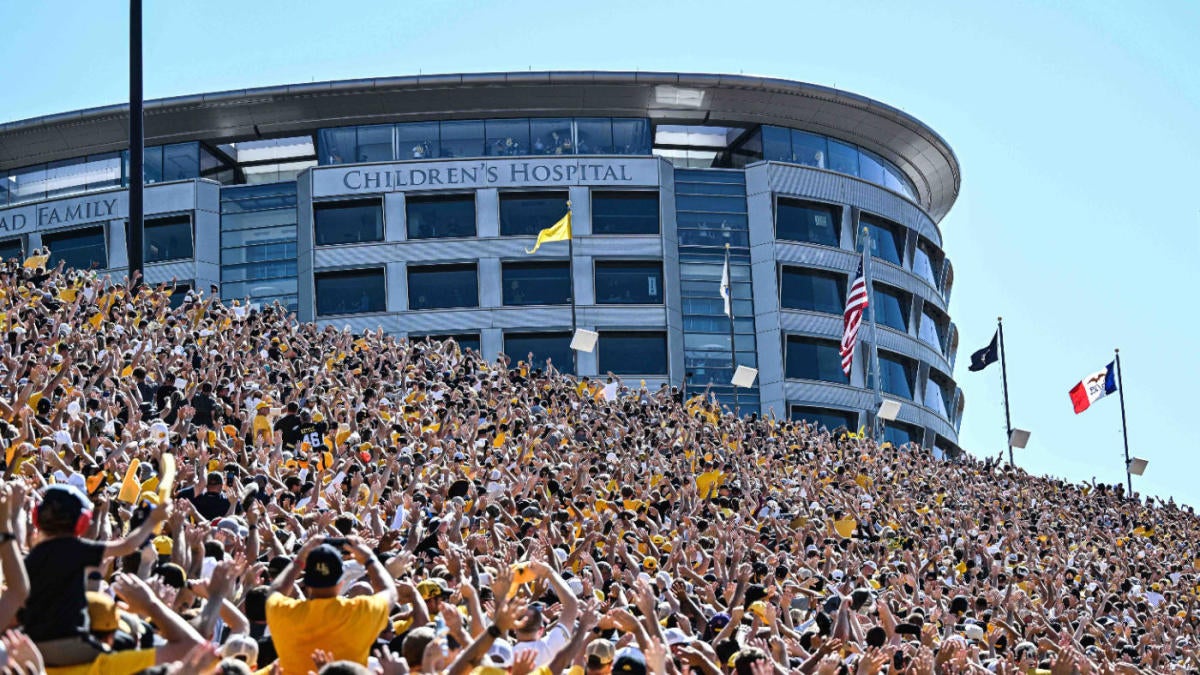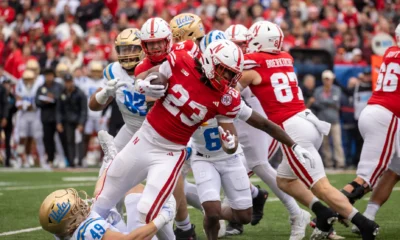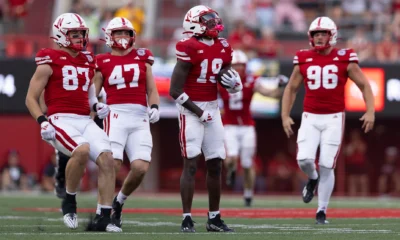
Traditions of college football are what makes the sports unique and separates it from others — including professional leagues. Perhaps no conference in major college football cherishes its traditions more than the Big Ten, which expands to 18 teams this 2024 season, bringing new pageantry to the league.
The additions of Oregon, UCLA, USC and Washington provide a West Coast influence on a conference with deep Midwest roots and Northeast connections following previous expansion. Although conference realignment has shifted the college football landscape in terms of rivalries, the traditions for each Big Ten team carry on.
Traditions of college football are essential, binding communities and generations of fans together through passion and pride that define Saturdays in the fall. Whether it is a fight song, a particular game day event, commemorative location on campus or iconic mascot, each Big Ten school has a unique tradition that its team and fans cherish.
So, what is the top college football tradition for every Big Ten school?
Illini Walk
About two hours before kickoff in Champaign, the Illinois players and coaches enter Memorial Stadium on the west side, walking through the gates of Grange Grove as fans greet them along the way. Following them are the Illini Marching Band and cheerleaders. The up-close encounter, known as the ‘Illini Walk,’ allows supporters of the Fighting Illini to boost team morale before the game. While the path of the ‘Illini Walk’ has changed over the years, it is still the top game day tradition for Illinois football.
Hep’s Rock
USATSI
A large limestone boulder, known as “Hep’s Rock,” sits behind the north end zone of Memorial Stadium in honor of the late Terry Hoeppner, a former head coach of Indiana football. The symbol of toughness and resilience is positioned just outside the Hoosiers’ locker room. Before each game, players have a ritual of touching the rock prior to taking the field. The dedication to “defend The Rock” started in 2005 when it was installed inside the home stadium.
The Hawkeye Wave
“The Hawkeye Wave” is one of the most emotionally moving traditions in all of college sports. At the end of the first quarter of every Iowa football home game, all 69,000-plus fans in attendance at Kinnick Stadium, as well as players and coaches from both teams, turn their attention from the field to the University of Iowa’s Stead Family Children’s Hospital and wave. This heartwarming gesture started in 2017, quickly becoming a beloved tradition that unites the community and brings joy to young patients.
Testudo
Getty Images
A 300-pound bronze statue of the Maryland mascot serves as a bit of a good luck symbol as the team takes the field prior to games inside SECU Stadium. Players and coaches rub the nose of Testudo, a diamondback terrapin, for good fortune. The statue was placed inside the stadium in 1992. The original version debuted in the 1930s and sits in a central location on campus in front of McKeldin Library.
Tunnel Walk
There is only one way to enter and exit the field at the Big House, which often leads to intense scrums between Michigan and opposing rivals. The Wolverines have several long-standing traditions, but perhaps none more notable than when Michigan players and coaches take the field and leap to touch the “Go Blue” banner as the marching band plays the fight song “The Victors.” This tradition, which began in 1962, is one of the most iconic scenes in college football.
“Zeke the Wonder Dog”
Zeke the Wonder Dog is a beloved Michigan State tradition that began in the 1970s. Known for his remarkable frisbee-catching skills, Zeke entertains the Spartan fans during halftime at home football games. This fun and exciting performance has become a beloved staple at Spartan Stadium. Over the years, several dogs have continued the legacy, ensuring that Zeke the Wonder Dog remains a symbol of Spartan pride and entertainment. The first Zeke was a yellow labrador retriever, who earned a varsity letter from the football team and then-head coach Darryl Rogers.
“Ski-U-Mah!”
“Ski-U-Mah” is the ultimate rallying cry for Minnesota football. Coined in 1884, this catchy phrase blends “Ski,” a Sioux word for victory, with “U-Mah” for the university. It is a spirited cheer that fires up the crowd and players alike. Whether shouted during games or sung in fight songs, “Ski-U-Mah” brings Golden Gophers fans together, celebrating their passion and pride for Minnesota athletics.
Tunnel Walk
The “Tunnel Walk” is an electrifying Nebraska football tradition that gives goosebumps to first-time viewers — and even those who have witnessed it countless times. Anticipation builds as half of Memorial Stadium yells “Husker!” while the other half responds “Power!” Highlights play on the massive screen above the north end zone, followed by the song “Sirius” over the sound system. The video then shows the Huskers emerging from the locker room, walking down the tunnel and stepping onto Tom Osborne Field, greeted by the deafening roar of the “Sea of Red.”
The Purple Clock
The clock tower above Rebecca Crown Center on the Northwestern campus lights up purple during the football season if the Wildcats win. If they lose, it turns white. The beloved landmark is a popular pre-game and post-game attraction for Northwestern fans as somewhat of a beacon of Wildcat pride. Although the Northwestern football stadium is getting a complete upgrade, the tradition of “The Purple Clock” expects to remain.
Covering ‘M’ on campus before The Game against Michigan
There is not a rivalry filled with more hatred in college football than Michigan and Ohio State. In anticipation for “The Game,” the Buckeye students meticulously put an ‘X’ with red tape over every ‘M’ on campus. From street signs, to building markers and everything in between, there is not a ‘M’ left uncovered. Even the City of Columbus and John Glenn International Airport gets in on the rivalry during ‘Beat Michigan’ week.
Oregon Ducks
The Duck
One of the most beloved mascots in college football, the Duck — sometimes referred to as “Puddles” — is known for its energetic antics during Oregon football games. From push-ups for every point scored, to a pre-game entrance on a motorcycle, the Duck enhances the experience for fans, helping contribute to an electric atmosphere inside Autzen Stadium in Eugene. The Duck debuted in the late 1940s and closely resembles Disney’s Donald Duck, due to a special agreement between the university and Walt Disney.
The White Out
There are few college football atmospheres that compare to ‘The White Out’ at Penn State. Each season, one signature home game — typically a night kickoff — is selected where fans in Beaver Stadium all wear white clothing. Initiated in 2004, the tradition started in the student section before eventually spreading to the entire Nittany Lion crowd in 2007. The 110,000-plus capacity stadium is often considered one of the loudest events in college football. Penn State has won six of its last seven White Out games with all but one coming against a nationally ranked opponent.
Big Bass Drum
USATSI
Purdue’s Big Bass Drum, known as the “World’s Largest Drum,” is an iconic part of the Boilermakers’ football traditions. Towering over the band, it makes a thunderous statement at every game. Debuting in 1921, the massive drum is rolled out by four members of the Purdue marching band and played by two drum beaters. The Big Bass Drum was denied access into Notre Dame Stadium prior to a game in 2021 because it was too large to fit through the visitor tunnel.
The Scarlet Walk
The Scarlet Walk is a cherished Rutgers football tradition where players and coaches, accompanied by the marching band and cheerleaders, walk through a sea of fans before each home game at SHI Stadium. This pre-game ritual, which started in 2009, symbolizes unity and support for Scarlet Knight football. The players and coaches also touch the “First Game” statue, a bronze sculpture erected in 1997 that commemorates the first intercollegiate football game ever played.
UCLA Bruins
The Victory Bell
USATSI
The Victory Bell is a rivalry trophy awarded to the winner of the annual UCLA-USC football game. The 295-pound brass bell was given to the UCLA student body in 1939 as a gift from the alumni association. However, in 1941, students from USC stole it from the Bruins, which started the tradition of the rivalry winner taking possession of the bell. It is also painted with the winning school’s color — blue for UCLA or cardinal for USC.
USC Trojans
“Fight On!”
“Fight On!” stands as the iconic USC school anthem, adored by Trojan fans and stirring rival passions alike. Composed in 1922 by Milo Sweet for a spirited competition, it quickly became synonymous with USC’s indomitable spirit. This rousing anthem, passionately sung at every football game, symbolizes perseverance and pride, uniting generations of Trojans in their unwavering support. Its timeless melody and lyrics echo through the Coliseum on game days.
Washington Huskies
Sail-gating
Sail-gating at Washington football games is a quintessential Seattle experience, blending the thrill of college football with the city’s maritime culture. Docked boats become floating tailgate parties in Union Bay, offering fans stunning views of Husky Stadium against the backdrop of the Cascade Mountains. Sail-gating has become a cherished tradition, enhancing game days with its unique flair and waterfront charm.
“Jump Around”
The “Jump Around” tradition at Wisconsin football games ignites Camp Randall Stadium between the third and fourth quarters. Originating in 1992 when the men’s swim team sparked the frenzy with a portable CD player and megaphone, it has grown into a stadium-wide phenomenon that shakes the stands, suites and press press. Fans create an electric atmosphere as they jump to the song.

Must See
-


Football
/ 5 months agoHuskers Fight Hard but Fall Short Against UCLA
LINCOLN – The Nebraska Cornhuskers gave it their all on Saturday, with standout efforts...
-


Football
/ 5 months agoGAMEDAY: Nebraska Set to Face Undefeated Indiana in Key Big Ten Showdown
Bloomington, IN – It’s Game Day, Husker Nation! Nebraska (5-1, 2-1 Big Ten) returns...
-


Football
/ 6 months agoBlackshirts Shine as Nebraska Tops Rutgers 14-7 on Homecoming
Lincoln, NE – Nebraska’s Blackshirt defense played a starring role in the Huskers’ 14-7...
By Chris












You must be logged in to post a comment Login